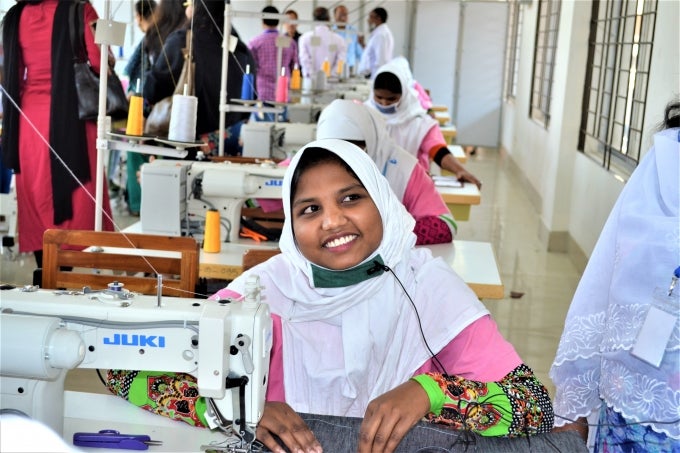
What does empowerment really mean? The Northern Area Reduction Initiative (NARI) project has forced me to ask this question several times. And the answers are apparently not as neat and foldable into the pre-set indicators as one would think.
Bangladesh’s garment industry has been at the heart of the country’s export boom ever since the first factory opened in 1976 . Today, the industry accounts for 80% of Bangladesh’s total exports. 85% of the workers in the garments sector are women. The NARI program aims to facilitate the entry of skilled women into this sector. However, this program is not just about technical skills aimed at churning out yet another RMG worker. The girls learn how to adjust to life outside their homes and villages, open and manage bank accounts, and learn about their rights and responsibilities as workers. They also negotiate contracts and rent, understand what sexual harassment is, and learn how and where to report it. They build networks, allow ideas to form on the basis of newly discovered confidence and self-esteem. Some graduate and join the earmarked jobs, often in positions several steps ahead of what they would have been offered without the training.
Social norms are very sticky: there is always the lure of shiny dormitories and fancy training centers. Laminated certificates and guaranteed jobs don’t always loosen them up. There is excitement among the young girls who want to work, earn, and stand on their own two feet. Sometimes they succeed in registering for the program – resist being pulled off buses by scared parents burdened under the weight of stigma – and sometimes they manage to overcome homesickness with dreams for the future. And sometimes they can’t do either.
In the end, the project provides information, skills, exposure, and seed money (stipends), and enables the girls to make informed choices that are not divorced from the context of their realities . In the source areas where trainees are recruited, parents are watching their daughters turn from burdens to assets. School dropouts have decreased in the poorest villages in five districts in northern Bangladesh, namely Gailbandha, Kurigram, Lalmonirhat, Nilphamari, and Rangpur, as have early marriages (to adhere to selection criteria) and independent, working women are now sought after for marriage.
One such example is Momota, a physically challenged woman from Badarganj, Parbatipur. She graduated from the Dhaka training center as part of the 2nd batch. Currently working in Savar, her financial independence has raised her social status. Her family faced difficulty finding a suitable groom but now, the tables have turned: the proposals are coming and she is taking her time to make her choice. All these girls, whether they choose to stay in jobs or go back home are bending the norms that have so far choked them.
More and more women are joining the labor force in Bangladesh. But the number of working women is still much lower than their male counterparts: in 2013, only 33.5 percent women vs 81.7 percent men worked in productive sectors. Bangladesh government, business, and civil society can all work together to promote gender equality in labor markets and raise the female labor force participation rate to 45 percent by 2020 . #PressForProgress #IWD2018


Join the Conversation